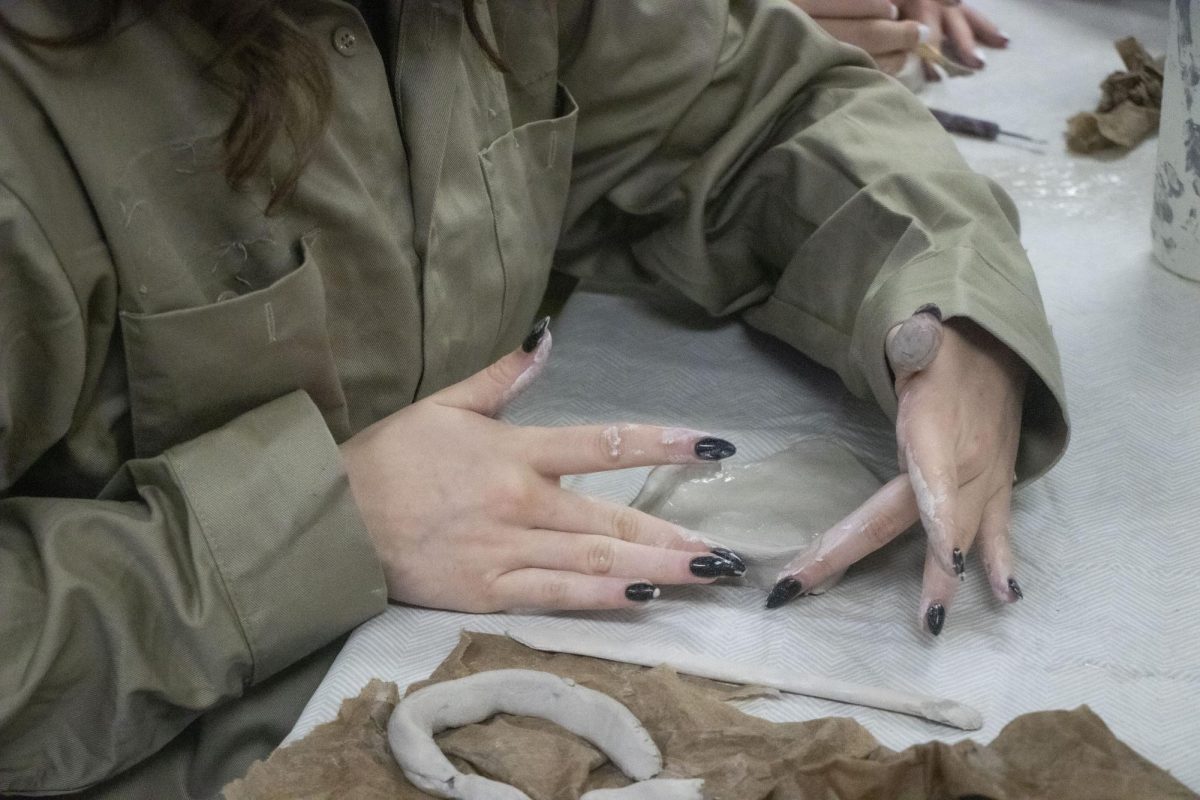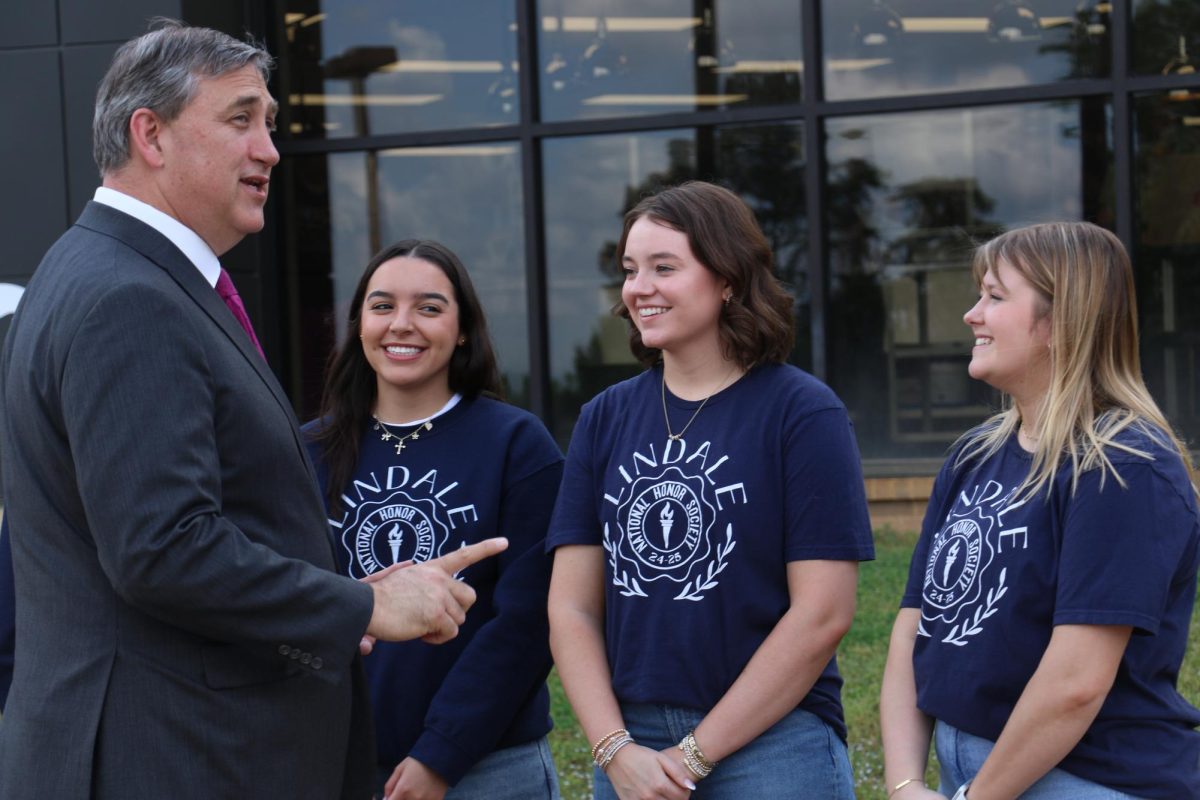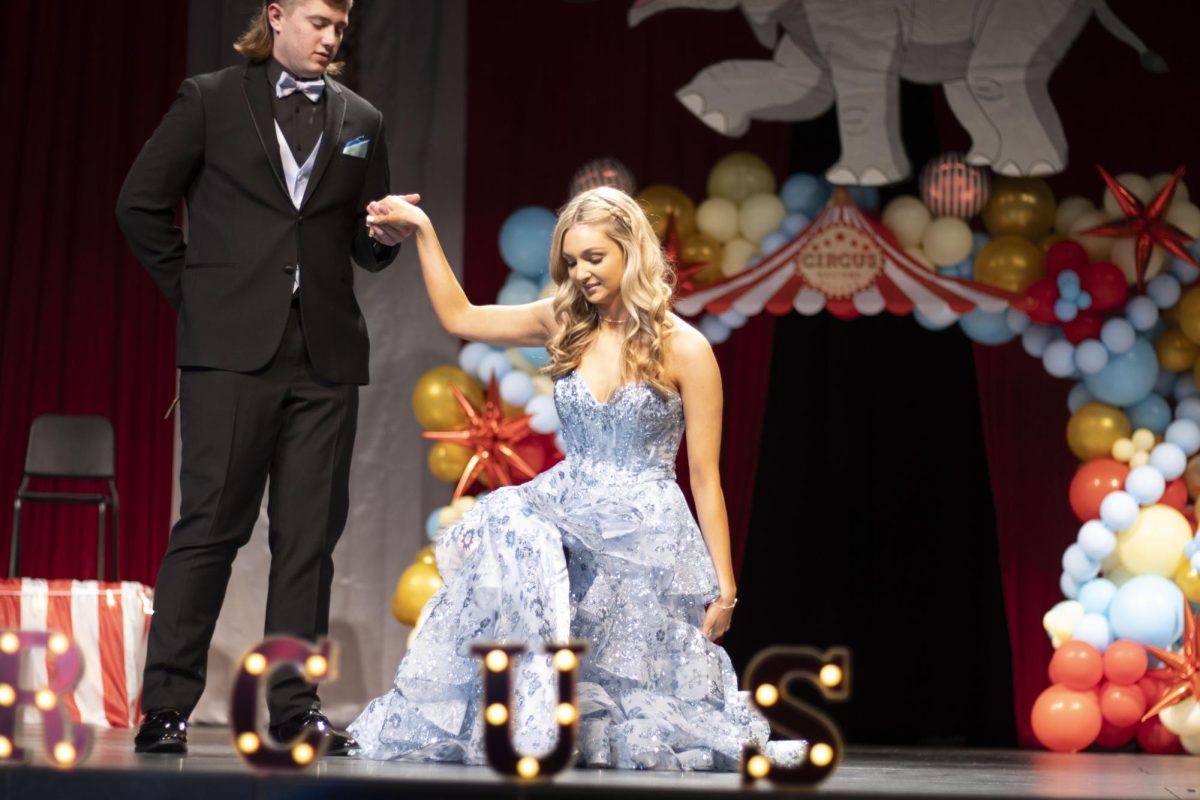Art Classes will spend the next six weeks creating three unique projects out of clay. Art 1 students were asked to create one pinch pot with coils, one slab vessel, and one sculpture, while advanced art students will create a hand-built, a wheel-thrown piece, and a sculpture.
“Ceramics is a fundamental part of art, particularly the 3D art, so we usually start the sculptural semester of Art 1, and now advanced art, with ceramics,” teacher Rebecca Harrison said. “One of the pieces that the advanced art students are creating must be a bowl that will be donated to the empty bowls project that will serve families in our community.”
Students began this project right after returning to school from winter break. January brings the right temperature to combat the heating of the ceramics.
“Students hit the ground running this semester,” Harrison said. “At the end of our first week back, all students worked on creating a plan for their piece(s) for this week. I typically assign clay work in January for a variety of reasons, the main one, though, is for energy efficiency. The kiln heats to between 1,750-1,832 degrees F and takes an 8-hour cycle for pieces to be fired to the right cone. If we were to create clay pieces in September, we would be heating the building and using more energy.”
The 6-week project is split into two-week increments for each of the three projects. The use of the wheel and the kiln for each project takes the most time.
“Students will work on their three pieces to construct, glaze, and fire them,” Harrison said. “We will have roughly 360 ceramics pieces being created. As much as the students need time to construct, they need much more time to properly fire in the kiln.”
Clay allows students to work with a new resource they may have never worked with before. They are also encouraged to be as creative as possible, as long as they meet the given requirements.
“As a creative personality myself, I try to limit student creativity in the least way possible,” Harrison said. “Students work with as few parameters as I can give them to be able to create work that is measurable across the board. The creativity throughout the projects is as amazing and diverse as the students.”
There are many benefits when it comes to clay for a student mentally and helps to enforce valuable skills. It is also a difficult medium to handle and can be a challenging experience for many individuals while it may come naturally to others.
“Students learn diligence and perseverance from working with Clay. They also practice patience, listening, and critical thinking skills,” Harrison said. “Clay is a beast all on its own and is different from any other material we use so that poses challenges. Some artists will work really hard but not excel in what they produce and some students will naturally be good with clay and will enjoy the feeling of sculpting art from a raw block of clay.”
Despite the struggles students may face, most end up enjoying the project overall. They are able to keep part of it and give another part away, allowing them to see their work pay off. Art one students will keep all three of their projects. Advanced art students will create a minimum of three and will donate one. There is an opportunity for the students to make an extra piece for their own collection.”
“More than anything, I am looking for indicators that the student really tried,” Harrison said. “ It is wonderful to see what they create, and for students to stretch outside of their comfort media and try something new. My favorite part of this project is watching the students persevere through the challenges and trust the process to create something they love.”













